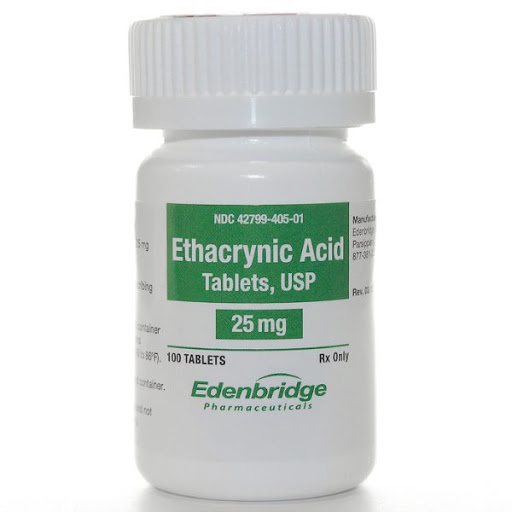COVID-19 Drugs: Italian Study Indicates That Diuretic Drug Ethacrynic Acid Could Be Repurposed To Treat COVID-19
Source: COVID-19 Drugs Jan 24, 2021 4 years, 11 months, 2 weeks, 5 days, 9 hours, 19 minutes ago
COVID-19 Drugs: Researchers from the University of Bari Aldo Moro-Italy and the University Campus Bio-Medico of Rome have in a new study found that the diuretic drug Ethacrynic Acid could be repurposed to treat COVID-19.

The research findings are published in the peer reviewed journal: Viruses
https://www.mdpi.com/1999-4915/13/1/106/htm
The SARS-CoV-2 coronavirus, the causative agent of the COVID-19 disease, is a single-stranded, positive-sense RNA virus with a genome size of about 30 kb.
The genome of SARS-CoV-2 contains several genes encoding both structural and non-structural proteins. There are two cysteine proteases in SARS-CoV-2 that are required for the formation of non-structural proteins.
Importantly one of these proteases is called chymotrypsin-like cysteine protease or main protease, whose recognition sequence cannot be identified by host proteases. This makes the main protease an important target for the development of therapeutic interventions.
From the start of the COVID-19 pandemic, several antiviral drugs have been repurposed to treat moderate-to-severe COVID-19 patients. Although some of these drugs have shown beneficial effects in reducing the symptom severity, most have failed in clinical trials to control disease progression and reduce mortality.
This study was designed to identify potential inhibitors of SARS-CoV-2 main protease by screening already clinically approved drugs.
The study team conducted in silico analysis, molecular docking experiments, and activity assays to identify potential inhibitors of SARS-CoV-2 main protease as well as to determine the molecular orientation and binding affinity between molecules.
Specifically, the team had tried to identify reversible competitive inhibitors and irreversible inhibitors that are capable of effectively interacting and covalently binding the active site of the main protease.
The scientists initially searched for competitive inhibitors of SARS-CoV-2 main protease by analyzing a total of 2111 FDA-approved molecules.
Docking analysis scores ranked these molecules and the molecules with appropriate binding affinity and binding energy have was chosen for further analysis.
The study team then conducted a series of in vitro experiments of identified potential drugs to determine the effect of certain inhibitors, such as Ciclesonide, Delafloxacin, Dutasteride, Netupitant, Tadalafil, Saquinavir, on main protease.
Specifically, the main protease-mediated proteolytic cleavage of a substrate peptide has been analyzed in the presence or absence of inhibitors. According to the findings, none of these inhibitors have shown significant inhibitory activity against SARS-CoV-2 main protease.
Considering that cysteine 145 is the most accessible residue in the main protease active site, the study team decided to only focus on inhibitors capable of binding to the sulfhydryl group of amino acid cysteine.
Upon comparing several compounds with good binding affinity, the study team finally selected ethacrynic acid as a poten
tial candidate inhibitor of the main protease.
The drug ethacrynic acid (IUPAC name: 2-[2,3-dichloro-4-(2-methylidenebutanoyl) phenoxy]acetic acid), an unsaturated ketone derivative of aryloxyacetic acid belonging to the class of loop diuretics. It is a clinically approved diuretic for treating cardiovascular, renal, or liver disorders.
According to the in-silico analysis findings, a favorable interaction pattern between ethacrynic acid and main protease has been observed.
This molecule is able to bind to the active site of Mpro with a calculated binding energy of approximately −6.0 kcal mol−1. Although the value of the bond energy is at the lower limit that the study team had imposed as significant for a specific bond, it must be considered that ethacrynic acid has a rather modest molecular weight (303.13 g mol−1). So, given the size of the molecule, the observed binding affinity value was suggestive of a specific interaction. In fact for a molecule of this size, in the setup, docking performed on randomly chosen regions of a randomly selected protein (a non-specific interaction) results in a calculated binding affinity approximately equal to (at most) −3.5 kcal mol−1. The analysis of the obtained poses revealed that the interaction between Mpro and the ethacrynic acid is interesting. The α,β-unsaturated region of the molecule is often located at a distance of less than 4 Å from the sulfur atom of the Cys 145 in the active site of the enzyme.
Moreover in these productive poses an interaction (hydrogen bond) between the carboxylic group of the ethacrynic acid and the aromatic hydroxyl group in Tyr 54 can be observed. This last residue participates in the formation of the active site.
More significantly, the scientists observed that ethacrynic acid can inhibit the main protease at a very low concentration (in 8 – 9.5 µM range), which makes ethacrynic acid the most potent protease inhibitor compared to other approved inhibitors, such as boceprivir and GC376.
The team identified ethacrynic acid as a potent inhibitor of SARS-CoV-2 main protease that can be repurposed as a potential COVID-19 drug. The inhibitory concentration of ethacrynic acid observed in the study is far below its cytotoxic concentration observed by previous studies involving various cell lines.
It should also be note that by intravenously administering 100 mg of ethacrynic acid, a plasma concentration of 10 µM can be achieved, equivalent to the inhibitory concentration of ethacrynic acid for the main protease.
Considering these observations, the scientists believe that ethacrynic acid can be potentially used clinically to prevent the propagation of SARS-CoV-2 infection.
The study team however has cautioned that because ethacrynic acid is a strong diuretic, excessive use can impair the fluid balance of the body. Moreover, because any molecule with a reactive sulfhydryl group can bind to ethacrynic acid, the compound's inhibitory efficacy can be reduced in cells containing a high amount of glutathione.
The study team hopes that the study findings will stimulate further research to evaluate the real efficacy of ethacrynic acid in treating COVID-19. Moreover, the fact that ethacrynic acid is able to inhibit the protease extremely effectively, could be the scaffold for medicinal chemistry studies to improve its efficiency.
For more on
COVID-19 Drugs, keep on logging to Thailand Medical News.
